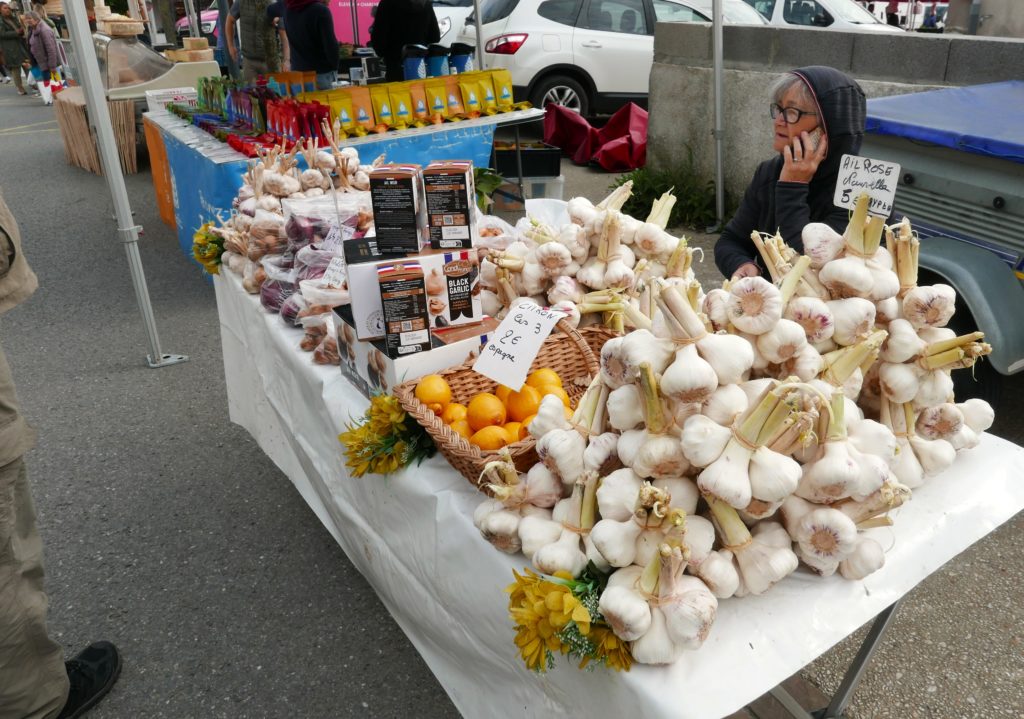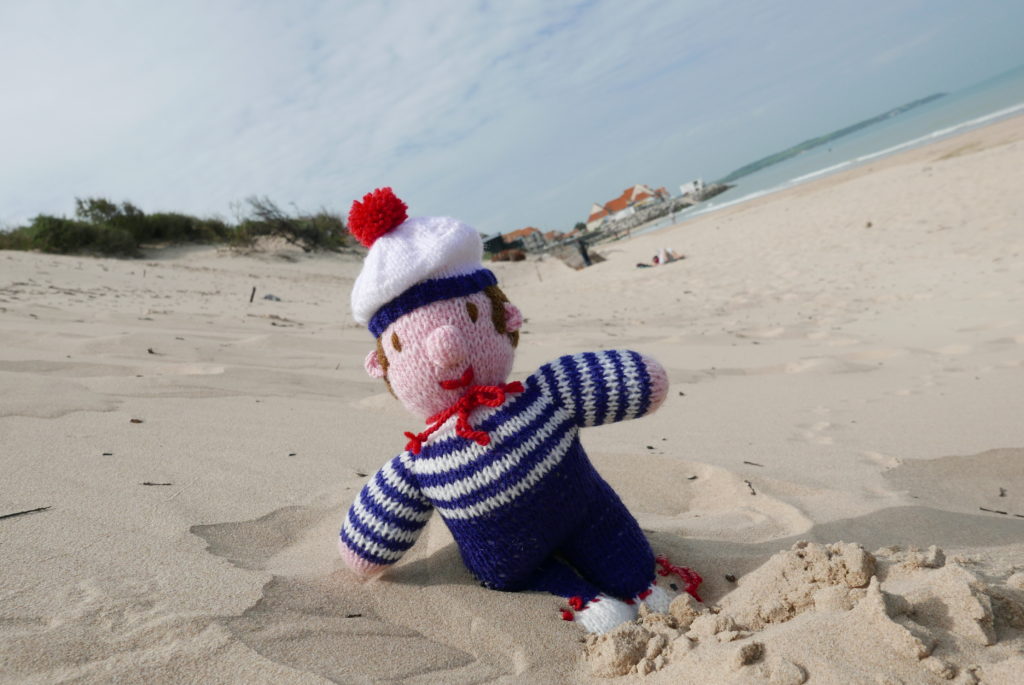 Garlic seller at Wissant Market
Garlic seller at Wissant MarketMemories of childhood holidays in Co. Mayo returned when JAMES RUDDY spent a week in an unspoilt northern French fishing village
On the dot of seven every evening, two wiry men dragged their blue-and-white flobart traditional fishing boat out of the sea and chugged their way home by a tractor and trailer, with their precious haul of shellfish lashed securely on board.
It was a heart-warming scene which has been played out for centuries across the beaches of northern French fishing villages like cosy little Ambleteuse, where the only modern changes to the tradition have been the replacement of magnificent white Boulonnais horses by tractors and the removal of bygone rugged sails due to the arrival of onboard engines.
Despite such ugly ‘advancements,’ the process reminded me graphically of those sturdy wooden beach boats which I would watch intently as a child as they were dragged ashore by Irish fishermen in Co. Mayo’s beautiful and Atlantic-ravaged Blacksod Bay over half a century ago.
 Vauban's Fort bathed in evening sunshine at pretty Ambleteuse
Vauban's Fort bathed in evening sunshine at pretty AmbleteuseBut it’s not just the ancient boats that have parallels here with Ireland’s ancient traditions and aura. From the lively markets to the packed Catholic churches and the enthusiasm for strong beer and bar-room banter, northern France can often feel like a chunk of the Old Country that has broken off and floated across the sea.
Increasingly, more and more of the 9 million British and Irish tourists who pass through the tunnel, as well as Boulogne, Calais and Dunkirk, every year are opting to spend time in the Pas de Calais region, instead of just turning right and heading for the hotspots of Brittany, Normandy and the country’s south.
And, after my partner and photographer Sue Mountjoy and I spent a week spent e-biking, rambling, touring and, of course, eating and drinking with the locals on the prettiest stretch of the coast (the 25 miles of the ‘Cote d’Opale between Calais and Boulogne) I can definitely recommend it.
 Crab boat in Ambleteuse
Crab boat in AmbleteuseThe complete Opal Coast – named by painters after the particular greys and blues of the sea and sky — stretches 75 miles from the Belgian border to the Somme estuary and looks much like Kent, its neighbour just across the water: rolling green hills, high chalky cliffs, sandy beaches and unspoilt seaside towns beloved of the urban French and Brits for over a century.
Our off-season base Ambleteuse was about as sleepy and quaint as can be, despite our ground-floor apartment being on the promenade and within a few yards of a popular drinks and snack shack and a very rare, restored 17th century Vauban Fort.
Founded as a hamlet of a few huts in the dunes, the low-rise resort – once popular with bourgeois tourists from Lille and Paris – has plenty of belle epoque holiday villas that are much sought after when the season starts.
Our days often began with early morning strolls across the lofty dunes to the south or by e-biking northwards along the coast road to the neighbouring ‘Big Brother’ resort of Audreselles and on to pretty Wissant for its colourful market for a picnic of cheese, bread, sausage and local beers.
A couple of detours took us to the two towering white cliff capes, Cap Griz-Nez (Grey Nose) and the much higher Cap Blanc-Nez (White Nose) from which the coast of Kent is just 21 miles away and easily seen by the naked eye.
With such close proximity between mutual one-time enemies, it’s no surprise that this coast is alive with historic reminders of past invasions and defences – from the ruined forts of Henry VIII to the countless concrete blockhouses and other structures built by the Nazis to thwart the expected Allied D-Day here — it arrived further down in Normandy, of course. Even Julius Caesar is said to have used Ambleteuse estuary to launch his conquest of Britain in 54 BC.
Our driving days took us to bustling Boulogne, which is still a lively fishing port with a busy market and cafes, and north to Calai with its fine beaches, as well as museums and art galleries. The town continues to relaunch itself as a resort and not just a ‘pass-through’ port. Among the new attractions was the giant mechanical dragon we rode on for an hour or so, breathing fire and spitting water at passing pedestrians.
 Marcel the Mascot
Marcel the MascotA true gem of a trip took us south to Montreuil-Sur-Mer, an ancient cobbled one-time port (before the river silted up) which has dramatic ramparts which we walked before lunching at the quaint Le Pot du Clape — soups and quiches are divine specialities.
You may have noticed the town in the latest Les Miserables film. Victor Hugo spent a half day there in 1837 and decided it was a perfect setting for his book. Every summer the locals follow suit and perform their own spectacular Son et lumière version.
Yet, it was little Ambleteuse that called us back each evening and truly stole our hearts with the fun banter in its bars and brasseries and at the snack shack, where we bought an eight euro souvenir mascot, Marcel the Mariner, from an old couple who knit them for local charities.
One elderly local man who was downing strong Leffe beer, informed us that the woollen figure was wearing a white hat with a red bobble on top because he was a submariner and it was called ‘un bonnet blesse’ with the red spot indicating his bleeding head – a problem suffered by tall French sailors in low-ceilinged subs.
The man laughed heartily as he told us the story – and left us wondering if this was yet another of those parallels with Ireland where bar banter leaves you with the distinct impression that your leg is being tugged very forcefully.
 Sue at Cap Gris-Nez with the White Cliffs of Calais in the background
Sue at Cap Gris-Nez with the White Cliffs of Calais in the backgroundFactfile
For information on the area go to: www.visit-pas-de-calais.com
The region’s top booking service is : www.reservation-pas-de-calais.com
For e-bikes try : www.velodopale.com

